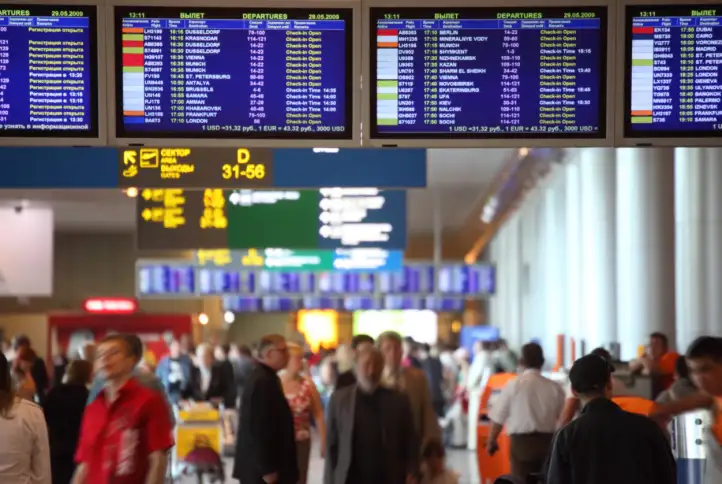
Amping up the pressure on American to overcome the Department of Justice’s suit to block its merger with US Airways, the judge overseeing American’s bankruptcy today approved the airline’s plan to exit bankruptcy protection, but only if the merger with US Airways proceeds as proposed.
In a memo to American employees lauding the judge’s decision, it was also reported that the airline’s chief, Tom Horton, would forego his controversial $20 million payout, included in the restructuring plan, in the interest of keeping the plan as obstacle-free as possible.
If the DOJ is successful in halting the merger, American would have to develop an all-new restructuring plan and submit it to the bankruptcy court for approval. In its public statements, however, American has claimed that there is no Plan B; its only focus is on the merger scenario.
Antitrust Trial Timeline
If no agreement between the DOJ and the airlines is reached in the interim, the trial to adjudicate the DOJ’s suit to block the merger is set to begin on November 25, and is expected to last for around 10 days. Other related events scheduled to take place in the run up to the trial’s start:
September 30 – Exchange preliminary witness list
September 30 – Parties’ joint submission due
October 1 – Status hearing
October 25 – Close of fact discovery
October 25 – Plaintiffs’ expert disclosure
October 30 – Final deadline for requests for admissions to be served
November 8 – Defendants’ expert disclosures
November 15 – Supplemental and/or rebuttal expert reports
November 20 – Close of expert discovery
Merger Cheat Sheet
- The new company would retain the “American Airlines” name and be based at American’s Ft. Worth headquarters.
- US Airways chief Doug Parker will be the new CEO. American chief Tom Horton will be named chairman of the new board and remain in that position until the spring of 2014 when the company’s first annual shareholder meeting will be held. When Horton departs the board, Parker will assume his position as chairman.
- American’s creditors would own around 72 percent of the new company; US Airways shareholders would get the rest.
- Based on 2012 results, the new company would have generated $38.7 billion in revenue.
- The merger is expected to generate around $1 billion in combined extra revenue and cost savings for the new company.
- The new company will be valued at around $11 billion.
- Combining the third- and fifth-largest U.S. carriers will create the world’s largest airline, in terms of passenger traffic.
- Prior to any post-merger rationalization, the two airlines will have around 120,000 employees, 950 planes, 6,500 daily flights, and eight major hubs (American: Dallas, Miami, Chicago, Los Angeles, New York; US Airways: Phoenix, Philadelphia, Charlotte). Although the carriers promise to maintain all current hubs, Phoenix and Philadelphia are likely to be downsized in the post-merger “rationalization.”
- The new American will be a member of the oneworld alliance, not the Star Alliance.
- The merger is subject to review and approval by U.S. regulators. That wasn’t expected to be a problem since there is relatively little overlap between the two airlines’ networks.
- The actual merger won’t happen overnight. United and Delta required five and seven months respectively to secure the necessary approvals for their mergers.
- It was 22 months after their merger closed before United and Continental finally merged their frequent flyer programs. Expect a similar post-close interval before American and US Airways consolidate their programs.
- Comparisons between American and US Airways’ current mileage programs are probably moot since there’s a high likelihood that an entirely new revenue-based program (like Southwest’s) will be introduced to replace both programs.
- After the merger, 83% of U.S. domestic air traffic will be in the hands of just four airlines (American 26%, United 19.3%, Delta 19.2%, Southwest 17.3%).
This article originally appeared on FrequentFlier.com.
We hand-pick everything we recommend and select items through testing and reviews. Some products are sent to us free of charge with no incentive to offer a favorable review. We offer our unbiased opinions and do not accept compensation to review products. All items are in stock and prices are accurate at the time of publication. If you buy something through our links, we may earn a commission.
Related
Top Fares From
Today's Top Travel Deals
Brought to you by ShermansTravel
Porto to Lisbon: 7-Nt, Small-Group Portugal...
Indus Travels
 vacation
$1899+
vacation
$1899+
Greenland: Luxe, All-Incl. 11-Nt Exploration Small-Ship...
Swan Hellenic



Ohio: Daily Car Rentals from Cincinnati
85OFF.com





